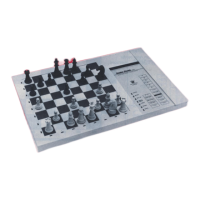Horizontal and Vertical
Mixing
Once the
two
sync pu
Ises
are
phase-sh
if
ted and
pulse-shaped,
NAND
gate
Z5
is
used
to
mix
the
two
signals
together
and
serrate the vertical
interval. Figure 8 shows idealized waveforms
around Z5.
At
Line A, the horizontal pulses
are
shown. The
source
for
this
output
is
Z6, pin
8.
At
Line
B,
the vertical pulse
is
shown coming from Z57,
pin 8. Z5, pins 1
and
2
are
tied
to
the waveforms
shown at Lines A and
B,
and
the resulting
NANDed
output
is
shown on Line
C.
Line C in
Figure 8
is
now
used
as
a source
to
NAND
the
horizontal
and
vertical syncs once more. Line D
shows the result
of
NAN
Ding Line C
with
Line
A. Line E shows the result
of
NAN
Ding Line C
with
Line
B.
Lines D and E
are
NANDed by Z5,
pins
10 and 9. The resulting mixed sync
wave-
shape
is
shown on Line
F.
Notice
two
things about Z5. First, pin 8's out-
put
(shown in Figure 8, Line
F)
is
"false"
com-
posite sync. In other words,
it
is
inverted away
from true form. Secondly, notice Z5 may
be
evaluated using Boolean algebra
into
a 2-input
exclusive
0 R gate. The
output
at Line C may
be
expressed
as
vR + HV, where V
is
vertical sync
at Line
Band
H
is
horizontal sync at Line A in
Figure 8.
40

